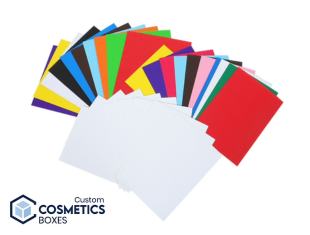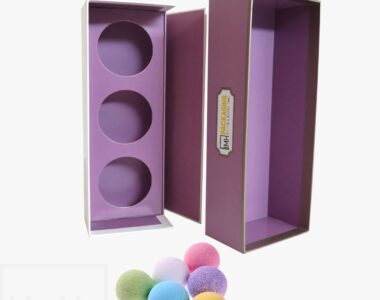
Cardboard is one of the most widely used materials for packaging, valued for its durability, versatility, and cost-effectiveness. Whether it’s for cardboard soap sleeves or custom cosmetic boxes, the production process of cardboard is fundamental in creating reliable and sustainable packaging solutions. Let’s dive into how cardboard is made and its advantages as a sustainable packaging material.

1) How Cardboard is Made
Cardboard production is a multi-step process that involves converting wood or recycled paper into sturdy sheets. Below are the major stages in the production of cardboard:
a) Pulping
The first stage in making cardboard involves pulping. Wood fibers or recycled paper materials are broken down into a pulp mixture. This pulp is created by soaking the raw materials in water and chemicals to break down the fibers, creating a slurry-like substance that can be processed further.
b) Cleaning
Once the pulp is formed, it undergoes a cleaning process. This step removes impurities such as ink, debris, and any non-fibrous materials that could affect the quality of the final product. The cleaned pulp ensures a smooth and consistent base for the cardboard sheets.
c) Bleaching
Depending on the type of cardboard being produced, bleaching may be necessary to lighten the pulp and give it a uniform color. This step is particularly important when the cardboard will be used for products requiring a clean, white surface like custom cosmetic boxes. Bleaching ensures that the cardboard has an attractive and premium appearance.
d) Forming
After the pulp is cleaned and, if necessary, bleached, it is pressed into flat sheets. The water is drained, and the fibers bond together to form solid layers. This stage marks the beginning of the actual cardboard material, as multiple layers can be laminated together to achieve the desired thickness.
e) Pressing
The cardboard sheets are pressed between rollers to remove any remaining water and to compact the fibers. Pressing also gives the cardboard its smooth surface, making it suitable for printing and branding purposes.
f) Corrugation
For corrugated cardboard, an additional layer of zig-zagged fluting is added between the flat sheets. This provides extra strength and durability, making it ideal for packaging heavier products. Corrugated cardboard is particularly useful for shipping and storage due to its resilience.
g) Cutting & Shaping
Once the cardboard sheets are pressed and corrugated, they are cut and shaped according to the desired specifications. Whether it’s small, sleek cardboard soap sleeves or larger packaging boxes, the cutting process ensures the material is ready for use in a variety of packaging formats.

2) Is Cardboard a Sustainable Packaging Material?
Cardboard is recognized as one of the most sustainable packaging materials available today. As consumers and businesses become more environmentally conscious, the demand for eco-friendly packaging has grown. Here’s why cardboard excels in this regard:
a) Recyclable
One of the biggest advantages of cardboard is that it is fully recyclable. Cardboard soap sleeves and custom cosmetic boxes can easily be recycled and repurposed into new products. This helps reduce waste and conserves natural resources. In fact, cardboard is one of the most recycled materials worldwide, contributing to a circular economy.
Contact Custom Cosmetic Box Packaging 📞 if you want Eco-Friendly Packaging for your businesses.
b) Affordablility
Cardboard is a cost-effective packaging solution. It is relatively cheap to produce and, because it can be recycled, the cost of raw materials is often lower. Small businesses, especially those focusing on cosmetic packaging for small businesses, can benefit from the affordability of cardboard, keeping their costs down while maintaining quality packaging.
c) Versatile
Cardboard’s versatility is one of its key strengths. It can be shaped into almost any form and easily printed on, making it ideal for everything from soap sleeves to luxury custom cosmetic boxes. Whether you need simple packaging or elaborate designs with branding, cardboard is adaptable to your needs.
d) Durable & Strong
Despite its lightweight nature, cardboard is incredibly strong and durable. Corrugated cardboard, in particular, provides excellent protection for products during shipping and storage. Whether you’re packaging delicate cosmetics or heavier items, cardboard ensures that your products are safe from damage.



